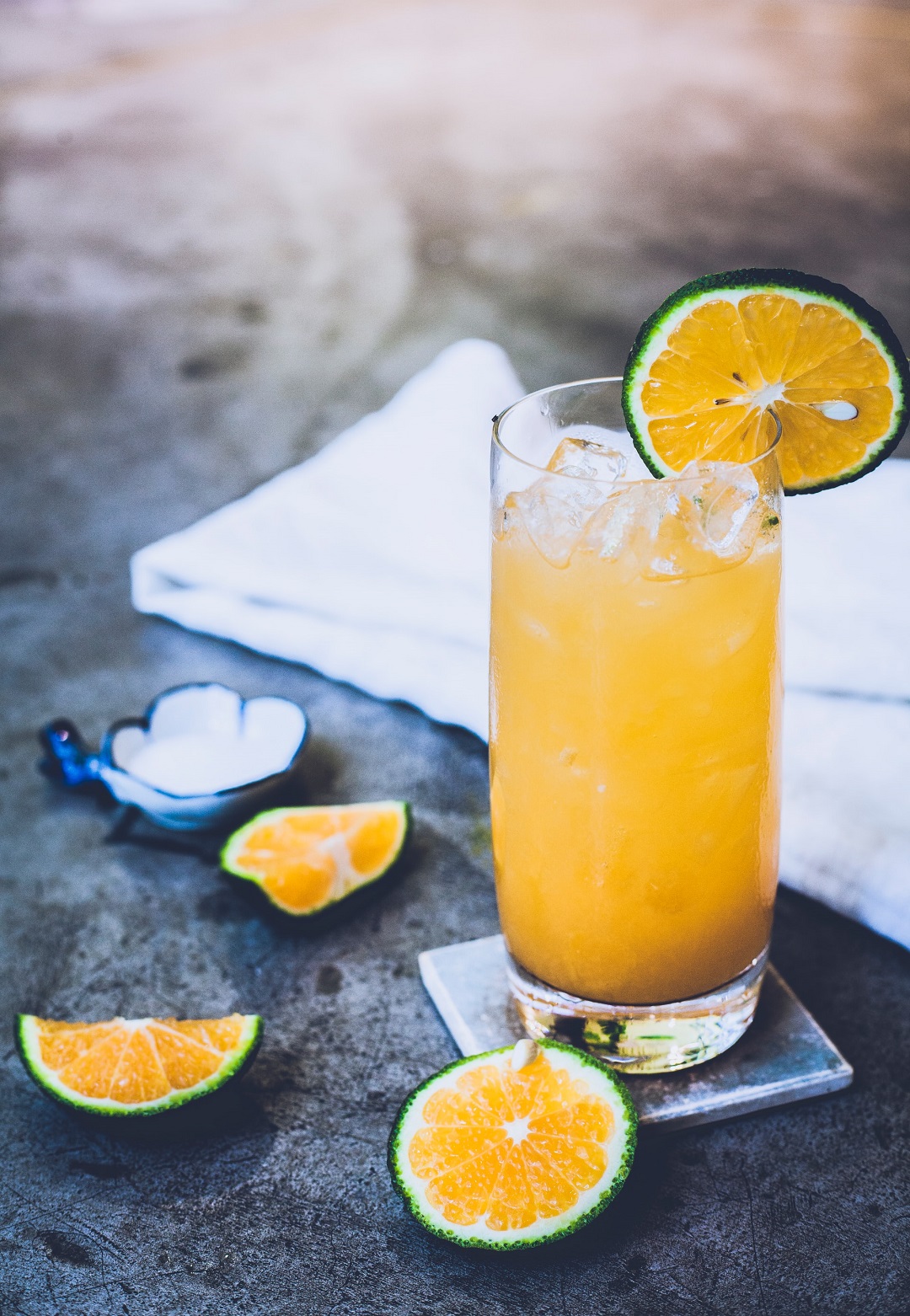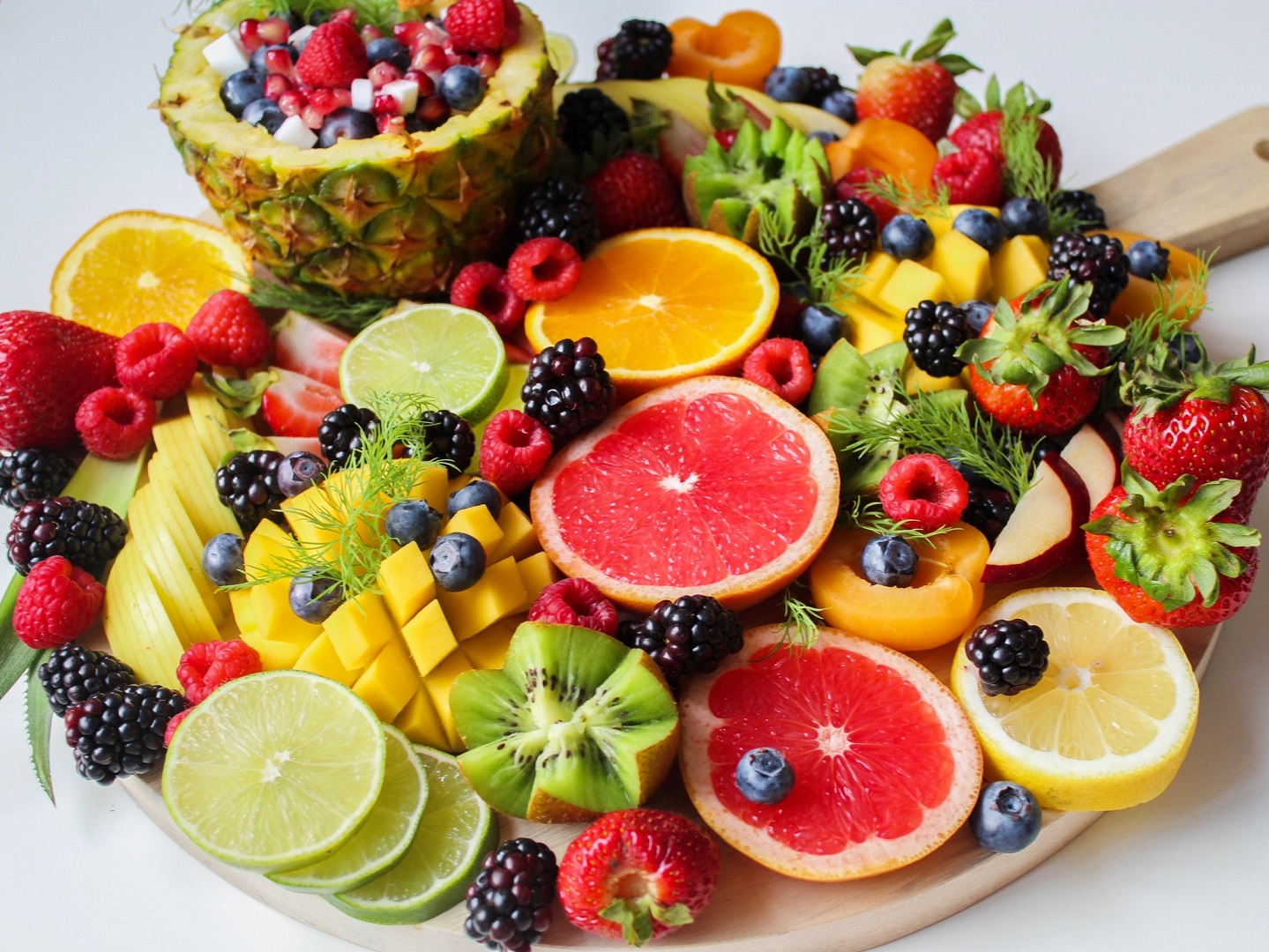
Reconstituted fruit juice is juice produced from a fruit juice concentrate. It differs slightly in taste to fresh juices, carrying a different texture and aroma. Like freshly squeezed juices, the juice is produced from a juicing machine, which then has as much water removed from it as possible, reducing it to a concentrate.
Many juice companies around Australia and around the world use the concentrated form of juice for transportation and storage, hydrating the concentrate (typically with 80% of water that was originally removed) only once it has arrived where it is to be packaged and distributed.
Frozen packets or tubes of reconstituted juice may also be purchased at your local supermarket. They can be stored in your home freezer for a number of years, leaving you with the DIY job of adding the water when there is a need.
Want Trusted Practitioner Referrals For Your Health Condition Now?
Click the button below to get free referrals for the leading practitioners on Natural Therapy pages now. 100% Secure & Easy. Over 1.2M referrals made so far.
What is Reconstituted Fruit Juice?
Reconstituted juice is called as such because its natural water content is significantly reduced over high heat until it's down to a concentrate. Water is then added to the fruit concentrate before it is distributed to the market.
While freshly squeezed orange juice is commonly found in many households in Australia, reconstituting it is a practical business strategy for fruit juice companies as it's easier and cheaper to store and transport.
Reconstituted fruit juice may not be downright unhealthy, but it's less nutritious compared to its natural counterpart due to the chemical procedures it undergoes during the preparation stage.
What's the Difference Between Reconstituted Fruit Juice & Fresh Fruit Juice?

Reconstituted fruit juice has low nutritional value compared to freshly squeezed fruit juice because the heating process it undergoes destroys most if not all the essential nutrients and enzymes found in the fruit of origin. Moreover, the first contains a certain amount of chemical additives to prolong its shelf life and compensate for the nutrients lost during the evaporation process.
Sodium benzoate is a type of food preservative added to acidic foods and beverages like packed orange juice to prevent spoilage. Because of this substance, you can rest assured that your reconstituted fruit juice will last for many years in the freezer. Reconstituted juices also contain ascorbic acid, which makes up for vitamin C depletion.
If you want to reap all the health benefits of fruit juice, you're better off squeezing it out yourself. Drinking freshly squeezed fruit juice, unlike reconstituted juice, allows you to absorb 100% of its vitamins and minerals. A glass of fresh orange juice contains a higher concentration of vitamin C, potassium, folate and micronutrients. Plus, you need not fear any potential side effects because it doesn't have any chemical additives.
What is in Reconstituted Fruit Juice?
Because the vitamins and minerals in fresh orange juice are depleted during the evaporation process, where its natural water content is reduced to a minuscule amount, additives like ascorbic acid are added in during the reconstitution process. Some juice companies would also add the fruit pulp back in for additional health benefits, as well as enhancing the product's colour.
To ensure the safety of packed juices, the water added to the fruit concentrate undergoes careful and extensive scrutiny. Companies see to it that the quality of water is safe for human consumption and devoid of pathogens that carry waterborne diseases.
Food additives & preservatives
To meet the natural flavour and nutritional characteristics of freshly squeezed juice, certain food additives are mixed into the fruit concentrate during its reconstitution process. These may include sugar or syrup, ascorbic acid and other vitamins and minerals. To prevent spoilage, most juice manufacturers would also add sodium benzoate to the mixture.
Sodium benzoate
Sodium benzoate, otherwise known as salt, is a food preservative that inhibits the growth of bacteria in food. Adding salt to reconstituted juice prevents it from getting spoiled easily, as it reduces the water activity in the beverage that contributes to bacterial growth. However, high amounts of sodium benzoate, especially when combined with vitamin C, can create carcinogenic chemicals.
Is Reconstituted Fruit Juice Nutritious?
Reconstituted fruit juices do not offer the high nutritional qualities of their freshly squeezed counterparts. Enzymes required for adequate food metabolism and the immune system are destroyed through the process of heating and reconstitution. Vitamin C levels are also depleted significantly but artificially added back by most manufacturers at a later date.
Reconstituted fruit juice labels may also be misleading, as there is no current Australian regulation to control juice companies. Domestic harvests can greatly vary season to season in Australia, and shortfalls in juice concentrate used in the production of reconstituted juices usually lead to importation. This is especially concerning when there is a possibility the concentrate comes from countries such as China, where there are no strict health codes of practice in place.
It is also worth checking the labels to ensure the reconstituted juice hasn't been produced from less expensive juice variants such as apple or grape, which offer a significantly less nutritional value. According to medical journals, orange juice contains more potassium than apple juice by 223 milligrams. It's also worth noting that the first only contains 2 mg of sodium, whereas the latter has 10 mg per cup.
If you're aiming to lose weight, you may want to cut apple juice out of your diet because it's high in calories, sugar and carbohydrates. Also, you want to keep your eye out for reconstituted juices that contain the artificial preservative sodium benzoate as excess intake of this substance could cause inflammation, obesity and allergies.
If you are looking for an environment-friendly juice option, reconstituted juice may not be the product for you either, especially when you consider the huge amounts of energy (in the form of fuels which could otherwise be conserved) that is spent in the processing, transportation, and reconstitution of the juice. The world does not need another product that contributes to global warming. All in the name of juice that essentially tastes the same to its freshly squeezed counterpart.

How to Choose Nutritious Juice
When choosing fruit juice in your local supermarket, it is always best to stick to the organic variety. They will only contain natural preservatives, such as citric acid, and offer a higher concentration of vitamins, minerals and phytonutrients. Organic juices are also free of cancer-causing pesticides often used to produce genetically modified crops, and contain no added sugar, colours or additives.
It is easy to squeeze oranges with an orange juice squeezer. When you squeeze the juice, remove the seeds, but think about putting the pulp back into the juice. Without the pulp, orange juice can be just a bland juice. With the pulp, it is a natural product and the pulp contains flavonoids, which is another health benefit of natural orange juice.
Apples and other hard fruits are harder to make juice out of, but juicers are available and worth investing in to ensure that you get the nutrients that are in the fresh fruit.
While vitamins may be added to reconstituted fruit juice, their potency may be called into question. Natural fruit juices have natural vitamins, whereas vitamins added to reconstituted fruit juices may not have the potency of natural vitamins.
Apple juice nutrition facts
Besides being sweet and refreshing, the high water content in a glass of apple juice helps rehydrate the cells in the body. It's also rich in vitamin C and antioxidants which support skin health and reverse signs of premature ageing. However, the high sugar and sodium content in apple juice can cause tooth decay, digestive issues and kidney problems. Research shows that a small cup of apple juice contains 10 milligrams of sodium and 24 grams of sugar.
Orange juice nutrition facts
Orange juice isn't only the king of vitamin C but also packed with calcium, folate and vitamin D, hence the reason why its inclusion in our daily meals is crucial. Additionally, it only contains 2 mg of sodium, 20 g of sugar and zero saturated fat and cholesterol.
What About Just Eating Fruits?
Fruit juice made from fresh fruit is nutritious, but what about having natural fruits? Natural fruits contain many substances that are good for health and natural fruits can be a good substitute for fruit juices. Apples, oranges, bananas and other fruits are best eaten whole and can have even more benefits than fruit juice.
For one thing, natural fruit contains fibre, which can be removed when making juice. The fibre helps digestion and natural fruits have many important qualities:
- Kiwi fruit has antioxidant properties and can delay the formation of wrinkles
- Pomegranate has riboflavin and can promote beautiful skin because of this property
- Watermelon has high levels of minerals, antioxidants and vitamins
- Avocados have an abundance of Vitamin E and B complex vitamins. These are hard to come by in other fruits and avocados can be a great way to stay healthy
- Papaya is rich in Vitamins A, C and E and also fights the formation of wrinkles
- Bananas have high concentrations of Vitamin C and B-6. They also contain manganese and antioxidants
- Grapes are rich in Vitamin C and manganese. Together, these ingredients fight UV radiation and antioxidants in grapes fight the aging process

This is just a short list of fruits that are healthy. Basically, all fruits are healthy and should be eaten raw. Fruit juice is another substitute and you may want to mix fruits to create a smoothie. Oranges and bananas make a great smoothie, but don't add sugar. They taste delicious naturally.
What are the benefits?
Reconstituted juice can be a more affordable and accessible option than freshly squeezed juice, which can be important for people who don't have access to fresh fruit or who are on a tight budget. Additionally, the addition of ascorbic acid can help boost the vitamin C content of the juice, which can be beneficial for people who struggle to get enough vitamin C in their diet. However, it's important to note that while reconstituted juice can be a convenient option, it's still important to consume a variety of fruits and vegetables to ensure that you're getting a wide range of nutrients.
Reconstituted fruit juice is made by adding water back to concentrated juice, which has had most of its water content removed to facilitate storage and transportation. While this process can help in preserving the juice and extending its shelf life, some nutrients can be lost during the concentration and reconstitution process. Here are some of the main nutrients affected:
1.Vitamin C (Ascorbic acid): Vitamin C is a water-soluble vitamin and is highly sensitive to heat, light, and oxygen. During the concentration process, which often involves heat treatment, some vitamin C can be destroyed. Furthermore, the exposure to oxygen during storage and reconstitution may lead to further degradation of vitamin C. The loss of vitamin C can vary depending on the specific fruit and processing conditions, but it can range from 10% to 50%.
2.B Vitamins: Like vitamin C, B vitamins are also water-soluble and can be affected during the concentration and reconstitution process. Some B vitamins, such as thiamin (B1), riboflavin (B2), and niacin (B3), can be lost due to heat treatment and exposure to light and oxygen. The extent of the loss may vary but can reach up to 30%.
3.Phytonutrients: These are bioactive compounds found in fruits that have antioxidant properties and potential health benefits. Examples include flavonoids, carotenoids, and phenolic acids. The concentration process, as well as reconstitution, can cause the loss of some phytonutrients due to heat, light, and oxygen exposure. The extent of the loss can vary widely depending on the specific compounds and processing conditions.
4.Enzymes: Enzymes are proteins that act as catalysts in various biochemical reactions. Some enzymes, such as polyphenol oxidase and peroxidase, can be inactivated during the heat treatment process in the concentration of fruit juice. This may lead to a loss of some health-promoting properties, although the overall impact on nutritional value is not as significant as the loss of vitamins or phytonutrients.
The production process for reconstituted juice can require large amounts of energy and resources, including water and fuel for transportation. Additionally, the use of additives and preservatives in reconstituted juice can contribute to waste and pollution. To minimize the environmental impact of juice consumption, it's important to consider sustainable options such as locally sourced fresh fruit or organic juice
How is Reconstituted Juice Made?
Reconstituted juice is made through a multi-step process that involves concentrating the juice and then adding water back to restore it to its original state. The main steps in making reconstituted juice are:
-
Extraction: The first step involves extracting juice from the fruit, typically using a mechanical juicer or press. This process separates the juice from the fruit's pulp, seeds, and skin.
-
Filtration: The extracted juice is then filtered to remove any remaining pulp, seeds, or other solid particles. This results in a clear juice that is ready for concentration.
-
Concentration: In this step, the water content of the juice is significantly reduced to create a thick, concentrated product. This is usually achieved using one of two methods:
a. Evaporation: The juice is heated, causing the water to evaporate and leaving behind a concentrated liquid. This method can be done under vacuum conditions to reduce the temperature required and minimize nutrient loss due to heat exposure.
b. Reverse osmosis or ultrafiltration: These methods use a semi-permeable membrane to separate water molecules from the juice, concentrating it without the need for heat. This can help preserve more nutrients and flavor compounds compared to evaporation.
-
Preservation: To ensure the concentrated juice remains stable and resistant to spoilage, some manufacturers may add preservatives
What preservatives are typically in reconstituted juice?
Preservatives in reconstituted juice are added to maintain freshness, prevent spoilage, and extend shelf life. Here are some common preservatives found in reconstituted juice:
-
Ascorbic acid (Vitamin C): Ascorbic acid is a natural antioxidant that helps prevent the oxidation of the juice, preserving its color and flavor. It also serves as a preservative by inhibiting the growth of bacteria and fungi.
-
Citric acid: Citric acid is a natural acidulant and preservative found in citrus fruits. It helps maintain the pH level of the juice, inhibiting the growth of spoilage microorganisms and prolonging shelf life. Citric acid also acts as an antioxidant, helping to prevent the browning of fruit juice.
-
Potassium sorbate: Potassium sorbate is a widely used food preservative that effectively inhibits the growth of molds, yeasts, and some bacteria. It is often used in combination with other preservatives to extend the shelf life of reconstituted juice.
-
Sodium benzoate: Sodium benzoate is another common preservative used in the food industry, including reconstituted juice. It works by inhibiting the growth of yeasts, molds, and bacteria. Sodium benzoate is more effective in acidic environments, so it is often used in combination with citric acid.
-
Calcium disodium EDT
Key Takeaway
Try to stay away from reconstituted fruit juice. It may be less expensive than using natural fruits, but you will miss out on the vitamins, minerals and other benefits of natural fruit juices or natural fruits. Heating fresh fruit juice to reduce its water content, and then adding water to the concentrate in the reconstitution process, depletes the nutritional value of its natural ingredients. The natural water in fruit juice is rich in minerals and vitamins, whereas added water will give you no benefits. Get a juicer or orange squeezer and enjoy the benefits of natural fruit juices.
References:
- Gibson, R. S. (2019). Principles of Nutritional Assessment. Oxford University Press.
- Guan, V. X., & Naidu, R. (2016). Occurrence and toxicity of sodium benzoate in food and beverage in the market: a review. Advances in Food and Nutrition Research, 77, 91-137.
- World Health Organization. (2015). Guideline: sugars intake for adults and children. Geneva: World Health Organization.
|
Do you have a natural health & wellness business? |









